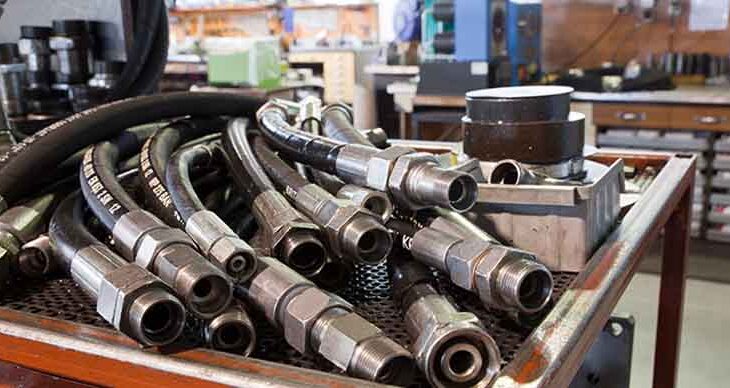Key Takeaways:
- Hydraulic hoses play a crucial role in various industries by facilitating fluid transfer and ensuring efficient operation.
- For optimum performance and safety, timely replacement and routine maintenance are essential.
- By following best practices, hydraulic hoses can last much longer, resulting in less downtime and lower repair expenses.
Table of Contents:
- Introduction to Hydraulic Hoses
- The Importance of Maintenance
- Common Maintenance Practices
- Signs of Wear and When to Replace
- Safety Tips for Handling Hydraulic Hoses
- Selecting the Right Hose for Your Needs
- The Future of Hydraulic Hoses
- Conclusion
Introduction to Hydraulic Hoses
Hydraulic hoses are critical components in various machines, facilitating the efficient transfer of hydraulic fluid. These flexible tubes might look simple, but their role in energy transfer is crucial for various systems. Selecting the right hoses and understanding their function ensures a seamless operation across industries, from automotive to construction.
Their importance is akin to that of an orchestra conductor—ensuring all elements work harmoniously. Without them, machinery operations would halt, highlighting the need for careful selection and regular maintenance.
The Importance of Maintenance
Just as you wouldn’t ignore regular car maintenance, hydraulic systems demand equal attention. Regular upkeep is crucial to avoid expensive repairs and hazardous situations. It keeps machinery in peak condition, minimizes operational disruptions, and ensures safety.
Routine checks serve as preventative care, catching small issues before they become major problems. This practice not only conserves resources but also ensures the safety of personnel and machinery, especially in high-pressure environments.
Common Maintenance Practices
Regular maintenance includes inspections for cracks, fraying, or leaks in hydraulic hoses. Dirt buildup can cause additional damage, making cleaning essential to the maintenance routine. Developing a comprehensive maintenance schedule by following industry best practices avoids unexpected breakdowns and extends the lifespan of the hoses.
Visual inspections, pressure, and fluid checks ensure optimal performance. A solid maintenance plan enhances efficiency and reinforces safety, safeguarding workers and machinery.
Signs of Wear and When to Replace
Early detection of cracks or blisters prevents malfunctions and potential hazards. Replacing hoses at the first sign of wear is vital for maintaining system safety and efficiency.
Keeping detailed logs of inspections and replacements provides insights for predictive maintenance strategies.
Safety Tips for Handling Hydraulic Hoses
When dealing with hydraulic hoses, prioritize safety by wearing protective gear and adhering to standard procedures. This practice is crucial for maintaining personal safety and preventing accidental hose damage.
Educating team members on safe handling can reduce accidents. Regular updates to safety protocols should reflect current standards and technological advancements in hydraulic systems, including hydraulic products.
Selecting the Right Hose for Your Needs
Choosing the correct hose involves considering pressure rating, temperature range, and material compatibility. Making informed decisions can prevent mishaps and extend hose longevity. Consulting with specialists provides the best fit for your applications, minimizing risks.
READ MORE : Mega888 Exclusive Promotions: How to Get Special Offers
The Future of Hydraulic Hoses
Advancements in materials and technology promise enhanced durability and efficiency. Staying informed about these developments offers competitive advantages in maintaining and designing systems with hydraulic technology.
Conclusion
Hydraulic hoses are vital for ensuring smooth machinery operation across various industries. Though often overlooked, their maintenance is imperative for operational success. Investing in proper care extends the lifespan, enhances performance, and provides long-term benefits for your systems.

